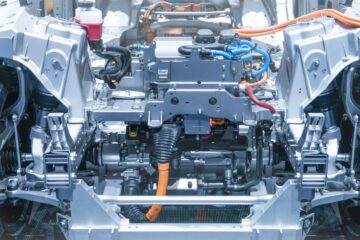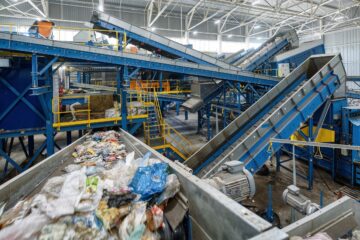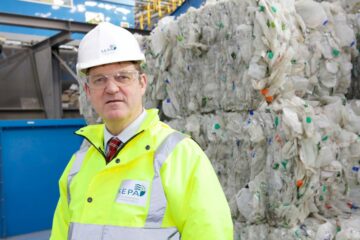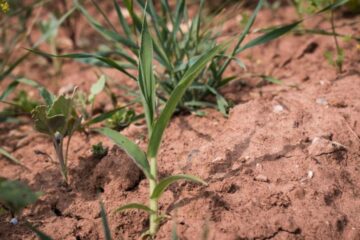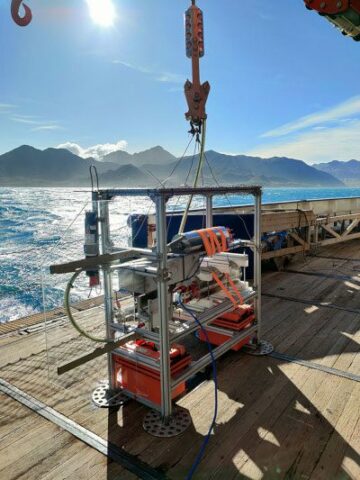

Useful results follow South Korean group’s investigation of the number and stability of high-concentration sub-200-nm nanobubbles in water under various conditions
Nanobubbles (NBs) are useful in industrial, agricultural, and water treatment applications due to their remarkable stability. But the mechanism underlying this stability is not clear. A recent study investigated the stability of high-concentration sub-200-nm NBs under various conditions, and found that they show exceptional stability even in the face of temperature variations and other unusual conditions – work that seemingly paves the way for potential mass production and distribution of bubble technologies.
Bubble technology can be used to address environmental pollution, enhancing water treatment processes, and to boost industrial and agricultural production. Their usefullness stems from the unique properties of nanobubbles (NBs)—gas bubbles smaller than 1,000 nanometers (nm) in diameter. NBs in water, especially those with diameter less than 200 nm, exhibit low buoyancy, high mass transfer efficiency, high reactivity, and exceptional stability.
However, the underlying mechanism behind this stability has remained elusive, with most studies focusing only on the temporal changes in the size and surface charge of NBs and overlooking the changes in their concentration under various conditions.
To address this issue, a team of researchers from Sahmyook University in South Korea has recently investigated the number and stability of high-concentration NBs in water under various conditions. Their study appears in the journal Applied Water Science.
“The most promising consequence of using NBs,” explained project leader Myoung-Hwan Park, “is that they can enhance the original performance of various components without any additional chemicals.”
The researchers first produced air NBs in water using a custom-made NB generator, with over two billion NBs per ml of water, each approximately 100 nm in size. They used nanoparticle tracking analysis, which involves shining a laser onto nanoscale particles suspended in a liquid, to track their movements under a microscope. This technique reveals how the number and size of NBs changes under different conditions, including storage at various temperatures and physical impacts like centrifugation, shaking, and stirring.
They found that the NBs retained 80–90% of their initial concentration under all the tested conditions. Specifically, when stored at 5oC, 25oC, 60oC, and 80oC for 120 days, the NBs maintained 85.7%, 81.0%, 103% and 84.8% of their initial concentration, respectively. In addition, when subjected to centrifugation for 90 minutes, the NBs maintained more than 90% of their initial concentration, and after eight hours of shaking, the corresponding value was 96%. Stirring the NB solution for eight hours did not change their concentration appreciably either. Moreover, the NBs exhibited no significant change in size in any of the above tests.
These findings indicate that sub-200-nm NBs exhibit remarkable stability under diverse conditions. “NBs show significant potential for real-life applications in mass production and distribution of bubble technology in various fields, such as pharmaceuticals, cosmetics, cleaning, environment, food, agriculture, and more,” said Dr Park. “In addition, scientists are working towards reducing the reliance on harmful but indispensable chemicals, and the use of harmless gases and NBs can further support their efforts.”
The group says the study can open up new avenues for bubble technologies via improved efficiency processes in water treatment, industry, agriculture, and elsewhere.
- SEO Powered Content & PR Distribution. Get Amplified Today.
- PlatoData.Network Vertical Generative Ai. Empower Yourself. Access Here.
- PlatoAiStream. Web3 Intelligence. Knowledge Amplified. Access Here.
- PlatoESG. Automotive / EVs, Carbon, CleanTech, Energy, Environment, Solar, Waste Management. Access Here.
- BlockOffsets. Modernizing Environmental Offset Ownership. Access Here.
- Source: https://envirotecmagazine.com/2023/07/25/research-sheds-light-on-mysterious-stability-of-nanobubbles/
- :has
- :is
- :not
- $UP
- 000
- 1
- 100
- 200
- 84
- 90
- a
- above
- addition
- Additional
- address
- After
- Agricultural
- agriculture
- AIR
- All
- analysis
- and
- any
- applications
- approximately
- ARE
- AS
- At
- banners
- BE
- behind
- Billion
- boost
- bubble
- but
- CAN
- change
- Changes
- charge
- chemicals
- Cleaning
- clear
- components
- concentration
- conditions
- content
- Corresponding
- Days
- DID
- different
- disabled
- distribution
- diverse
- dr
- due
- each
- efficiency
- efforts
- eight
- either
- elsewhere
- enhance
- enhancing
- Environment
- environmental
- Envirotec
- especially
- Even
- exceptional
- exhibit
- explained
- Face
- Fields
- findings
- First
- focusing
- follow
- food
- For
- found
- from
- further
- generator
- Group
- Group’s
- harmful
- High
- HOURS
- How
- HTTPS
- image
- Impacts
- improved
- in
- Including
- indicate
- industrial
- industry
- initial
- investigation
- involves
- issue
- journal
- jpg
- korea
- Korean
- laser
- leader
- less
- light
- like
- Liquid
- Low
- Mass
- mechanism
- Microscope
- minutes
- ML
- more
- Moreover
- most
- movements
- mysterious
- New
- no
- number
- of
- on
- only
- onto
- open
- or
- original
- Other
- over
- Park
- per
- performance
- pharmaceuticals
- physical
- plato
- Plato Data Intelligence
- PlatoData
- Pollution
- potential
- processes
- Produced
- Production
- project
- promising
- properties
- qualified
- recent
- recently
- reducing
- reliance
- remained
- remarkable
- research
- researchers
- Results
- Reveals
- Said
- says
- scientists
- seemingly
- show
- significant
- Size
- smaller
- solution
- South
- South Korea
- south korean
- specifically
- Stability
- stems
- storage
- stored
- studies
- Study
- such
- support
- Surface
- suspended
- team
- Technologies
- Technology
- tested
- tests
- than
- that
- The
- their
- There.
- they
- this
- those
- to
- towards
- track
- Tracking
- transfer
- treatment
- two
- under
- underlying
- unique
- university
- unusual
- use
- used
- using
- value
- various
- via
- was
- Water
- Way..
- when
- which
- with
- without
- Work
- working
- zephyrnet


